🇷🇼🇨🇩 Rwanda–DRC Peace Deal: Kagame Full Interview — Key Points
President Paul Kagame sat down with Steve Clemons (Al Jazeera) to break down the Trump-brokered peace deal between Rwanda & the DRC.
2/ 🔴 “Trump created pressure that never existed before.”
Kagame calls the deal historic — the first time a US President intervenes personally at this level to push Kigali & Kinshasa toward peace.
3/ 🟡 Root Causes
Kagame says the crisis goes back to:
• The 1994 Genocide
• Refugee flows into DRC
• Security spillover Rwanda has “warned about for decades.”
4/ 🔵 On Trump’s diplomacy
Kagame praises practical results over speeches:
“I like what brings results. High-level talk usually creates more problems.”
5/ 🟢 On choosing US & Qatar over African mediation
Kagame rejects the claim:
“Tshisekedi himself went to Qatar and requested Doha talks. Rwanda never avoided African frameworks.”
6/ 🔴 Two parallel negotiation tracks
Kagame explains:
• Doha track → DRC vs AFC/M23
• Washington track → Rwanda vs DRC
And both converged into the final deal.
7/ 🟡 Can Tshisekedi control the East?
Kagame avoids a direct response but stresses:
“Implementation matters more than promises.”
8/ 🔵 On minerals & US–China rivalry
Kagame highlights Rwanda’s own resources — tungsten, tin, tantalum, lithium — and rejects mineral smuggling accusations:
“Not everything exported from Rwanda comes from Congo.”
9/ 🟢 Kagame says Rwanda is unfairly targeted
“Many neighbors trade far more with DRC than Rwanda — yet Rwanda is always the accused.”
10/ 🔴 Development vs destabilization
Kagame says Rwanda cannot be building itself while destabilizing others:
“It’s impossible.”
11/ 🟡 Why this deal is different
According to Kagame:
✔ Strong US pressure
✔ Qatar deeply engaged
✔ New accountability mechanisms
✔ Rwanda & DRC finally reached the first step together
12/ 🔵 No guarantees — but new hope
Kagame: “No one can guarantee 100%. But we now have a path, a framework, and people who will hold us accountable.”
13/ 🟢 What determines success
• Rwanda’s implementation
• DRC’s consistency
• US & Qatar follow-through
• Regional leaders supporting the process
14/ 🔴 Closing Moment
Steve Clemons: “History will judge this moment.”
Kagame: “We’ll use this opportunity well.”
View 137 times
UN calls on Taliban to lift ban on Afghan women in its offices. The United Nations called on the Taliban authorities on Sunday to lift its ban on Afghan women working in its offices, saying the restriction puts “life-saving services” at risk.
Since the Taliban regained power in 2021, Afghan women have been barred from doing most jobs, visiting parks and beauty salons, and attending school beyond the age of 12.
In September, the Taliban authorities began prohibiting women staff members from entering UN offices.
“We call for the ban on Afghan women staff and contractors from entering United Nations premises to be reversed, and for their safe access to offices and the field,” Susan Ferguson, the special representative of the UN’s women’s agency in Afghanistan, said in a statement.
“The longer these restrictions remain in place, the greater the risk to these life-saving services,” Ferguson said, adding that they violated the UN’s principles of human rights and equality.
The statement did not say how many staff were affected, but UN sources indicated that several hundred women were facing the ban.
Staff have been working remotely for the past three months, notably providing assistance to the victims of deadly earthquakes and to Afghan migrants deported from neighbouring Pakistan and Iran, Ferguson said.
Describing their work as “indispensable”, she said: “Only through their presence can we reach women and girls safely and provide culturally appropriate assistance.”
The Taliban authorities did not immediately respond to an AFP request for comment.
In September, the UN’s refugee agency suspended cash aid to returned Afghan migrants, citing the impossibility of interviewing and collecting information on the more than 50 per cent of returnees who were women.
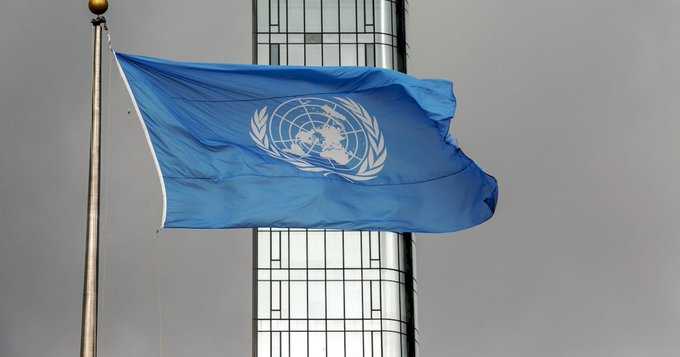
View 139 times
#Chernobyl protective shield can no longer confine radiation after drone strike, #UN nuclear watchdog says.
The protective shield built around the Chernobyl nuclear disaster site in Ukraine can no longer do its job to confine radioactive waste as a result of a drone strike earlier this year, according to the International Atomic Energy Agency (IAEA).
The New Safe Confinement (NSC) at Chernobyl, which was “severely damaged” by the drone strike in February, has “lost its primary safety functions, including the confinement capability,” the IAEA said in a Friday statement.
Ukraine accused Russia of carrying out the Feb. 14 strike at Chernobyl, which the Kremlin denied.
The strike hit the NSC, sparking a fire and damaging the protective cladding around it, the IAEA said.
The nuclear watchdog has recommended a major renovation of the huge steel structure, which was put into place several years ago to enable clean-up operations and ensure the site’s safety nearly four decades on from the worst nuclear power plant accident in history.
“Limited temporary repairs have been carried out on the roof, but timely and comprehensive restoration remains essential to prevent further degradation and ensure long-term nuclear safety,” IAEA Director General Rafael Mariano Grossi said.
Grossi added that there had been no permanent damage to the NSC’s load-bearing structures or monitoring systems.
The IAEA, which has a permanent presence at the site, will “continue to do everything it can to support efforts to fully restore nuclear safety and security,” Grossi said.
It’s not the first time that Chernobyl has been in the spotlight over the course of Russia’s near four-year war in Ukraine. Russian forces seized the nuclear plant and its surrounding area in the early days of Moscow’s full-scale invasion, overrunning the plant in February 2022 and holding staff hostage. They left the plant and handed back control to Ukrainian personnel just over a month later.
The NSC is a massive, arch-shaped steel structure built at the Chernobyl site to cover the ruined No. 4 reactor and contain its radioactive material.
As the world’s largest movable land structure, the colossal hangar is a monumental feat of engineering. Built in 2010 and completed in 2019, it was designed to last 100 years and has played a crucial role in securing the site.
The project cost €2.1 billion (US$2.4 billion) and was funded by contributions from more than 45 donor countries and organizations through the Chernobyl Shelter Fund, according to the European Bank for Reconstruction and Development, which in 2019 hailed the venture as “the largest international collaboration ever in the field of nuclear safety.”
In April 26, 1986 an explosion tore through the No. 4 reactor at Chernobyl, in what was then the Soviet Union, spreading radioactivity across swathes of Ukraine, Belarus, Russia and beyond.
More than 30 people were killed in the nearby city of Pripyat, Ukraine, with many others suffering symptoms resulting from radiation exposure since, according to the IAEA and the World Health Organization. Birth defects and cancer rates among residents in the area exposed to radiation are still high.
By Kara Fox, CNN
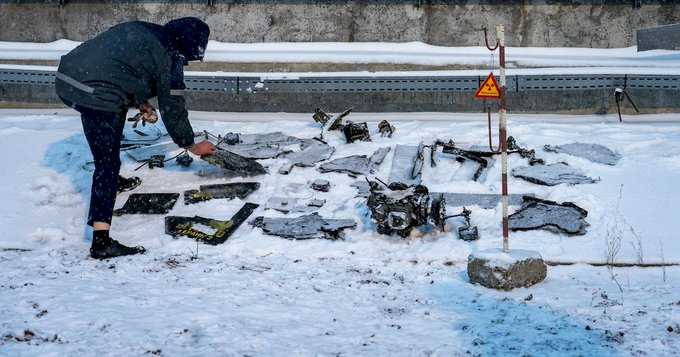
View 144 times
‘Trying to have a family isn’t a criminal offence’: #Canadian surrogate denied entry into U.S.
A Canadian woman trying to board a flight south to visit a California fertility clinic was recently denied entry into the United States by American customs and border officers.
Still in disbelief, Melody - who asked that we only use her first name - says she was in shock as two armed officers escorted her out of Calgary International Airport.
Melody is a Canadian surrogate who’s been trying for months to carry a second child for an American family unable to have a child on their own.
On Oct. 12, Melody arrived at Calgary International Airport’s U.S. customs preclearance area, and says she shared all her paperwork as a surrogate to travel to a fertility clinic in California, where the embryo is being stored. She also had her return ticket to Canada booked for the day after the procedure, with plans to remain pregnant in Canada and deliver the child on Canadian soil.
That’s when a U.S. customs and border agent told her what she was doing was “illegal, which isn’t”, Melody said. Surrogacy isn’t illegal in Canada, nor is it prohibited in the state of California.
She says the U.S. border agent also alleged she “was going down to California for financial benefit.”
Surrogates visiting fertility clinics in America isn’t uncommon. In an email to CTV News, a U.S. Customs and Border Protection spokesperson wrote that a Canadian “surrogate for an American family, particularly if compensation is involved, would likely be classified as employment under U.S. immigration law. Employment in the United States typically requires a work visa, such as an H-2B or another suitable visa category, depending on the specific situation.”

View 143 times
Italy to open Europe’s first marine sanctuary for dolphins
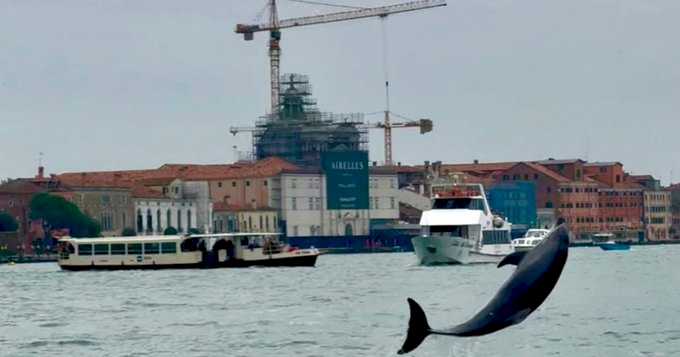
View 144 times
More #Canadians are signing up to serve in the military, The Canadian Armed Forces are seeing a surge of recruits graduating from basic training at the Leadership and Recruit school in St-Jean-Sur-Richelieu, Quebec.
This marks a sea change after years of missing targets and grappling with how to get more Canadians signed up to serve. Five platoons recently took part in the parade marking graduation after eight weeks of instructors putting 204 would-be soldiers, sailors, aviators and new officers through their paces.
“This year, we put on 7,600 basic training seats, which is the most we’ve ever run,” says Commandant Marc Kieley. “This is the most we have ever run in the post-Cold War history of the Canadian Forces.”
Twenty-two-year-old Private Erica Jerome-Valdez was among recruits from across the country marching in the parade attended by hundreds of family members and friends.
“I think the Canadian Forces worked really hard to improve their image and also diversity,” says Jerome-Valdez. “I think it has become a more welcoming environment for different people.”
Despite efforts to address sexual misconduct in the armed forces, only 18 per cent of applicants are women. But overall, changes made in recent years are helping beef up military ranks, including the Ottawa putting more money on the table.
In August, Prime Minister Mark Carney announced pay raises retroactive to April 1, 2025, including a 20 per cent wage increase for privates in the Regular Force. A new Military Service Pay benefit and additional compensative initiatives were also added.
“Every member of the CAF works really hard,” says Jerome-Valdez. “I think it’s fair that we are getting that improvement in conditions and salary. I think that is also helping to bring more people in.”
The recruitment process was also streamlined.
In October, an Auditor General’s report looking at recruitment from 2022 to 2025 concluded the military did not bring in enough applicants to meet its operational need. There is still a gap, but it is starting to close.
“There is a common misconception that most people joining are between the ages of 18 and 22,” says Captain David White and instructor at the Canadian Forces Leadership and Recruit School. “We do skew towards a younger side, however a lot of candidates that we see coming through are in their late 20’s, late 30’s, and even in their 40’s.”
Geopolitical tensions have drawn attention to securing Canada’s sovereignty, including a focus on defending the North. The federal government is also planning a major cash infusion into the military over the next four years. That has contributed to boosting numbers but also changing the face of just who is signing up.
Traditionally, most recruits hailed from military families.
Private Logan McMackin from New Brunswick, for instance, followed in his grandfather Thomas McMackin’s footsteps. He served in the Second World War.
“My middle name is Thomas too,” he says. “I really looked up to him. My dad always told me stories about him and how strong he was and cool. It is super inspiring to chase that kind of life, and a disciplined lifestyle.”
But many other recruits now have no military ties.
“It’s wonderful to have second and third and fourth generation CAF members,” says Kieley. “But having Canadians and new Canadians with no family history of the military suddenly showing up in greater numbers, saying they know there is a need to defend the country, is great. They know there is a need to support Canadian security and the security of our values. They are coming in as the very first person in their family or friend group to serve. It is a definite change.”
The Leadership and Recruit’s school mission now is to continue the trend.
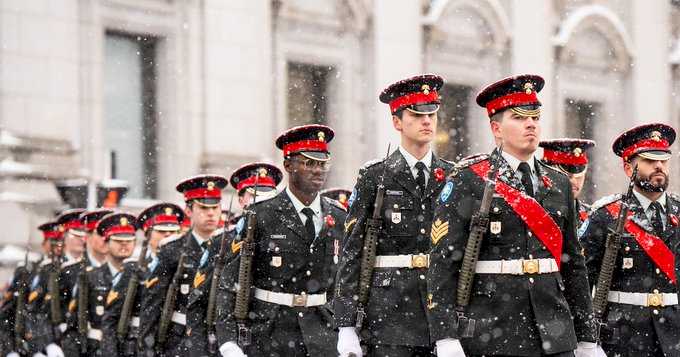
View 144 times
How the U.K.’s ancient stones are drawing renewed awareness of the sacred.
PENZANCE, England — On a gray afternoon in November, a group of 19 people gathered outside the Church of St. Buryan, an iconic medieval parish with a 92-foot granite tower that dominates the skyline.
Clad in raincoats, reflective vests, waterproof boots with some holding wooden staffs, these residents of Cornwall, England’s coastal southwestern county, were ready for a different kind of spiritual experience — not in the church, but a stone circle.
Carolyn Kennett, an astronomer leading a 3.2-mile hike to the stone circle Boscawen-Ûn, explained why she organized the trip for Nov. 5, the full moon. She was curious to see whether the moon rising opposite the sun cast a particular light on the taller inclining stone — the only one made of quartz.
“It would have been a really nice thing to have seen,” she told the group, motioning to the overcast sky. “We’re just going to hopefully have to imagine it, but you never know, we might get a small gap.”
The group assembled before her was undeterred. With one or two exceptions, they had trekked to Boscawen-Ûn multiple times.
___
This content is written and produced by Religion News Service and distributed by The Associated Press. RNS and AP partner on some religion news content. RNS is solely responsible for this story.
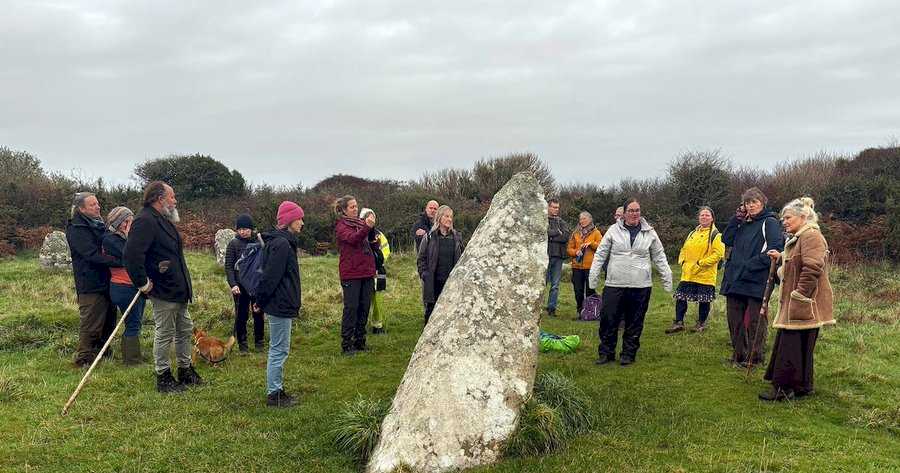
View 141 times
An international body tasked with governing Gaza will be announced by the end of year, officials say.
DOHA, Qatar — An international body tasked with governing the Gaza Strip under the next phase of the U.S.-brokered ceasefire is expected to be announced by the end of the year, an Arab official and a Western diplomat said Friday.
According to the ceasefire agreement, the authority — known as the Board of Peace and chaired by U.S. President Donald Trump — is to oversee Gaza’s reconstruction under a two-year, renewable UN mandate.
It will include about a dozen other Middle Eastern and Western leaders, the Arab official and the Western diplomat told The Associated Press, speaking on condition of anonymity because they were not authorized to speak on the matter.
The path forward for Gaza
Also to be announced is a committee of Palestinian technocrats who will run the day-to-day administration of post-war Gaza, they two said. The Western diplomat, who spoke to the AP over the phone from Cairo, said the announcement about this will likely happen when Trump and Israeli Prime Minister Benjamin Netanyahu meet later this month.
The ceasefire deal also calls for an armed International Stabilization Force to keep security and ensure the disarming of the militant Hamas group, a key demand of Israel.
The announcement would be a significant step forward in implementing Trump’s 20-point plan for the territory devastated by Israel’s two-year campaign against Hamas.
The shaky ceasefire, which came into effect on Oct. 10, has been tested by outbursts of violence and accusations by both sides of violations of the truce. The first phase of the ceasefire has neared completion, though Hamas is still to hand over the remains of a last Israel hostage called for under the deal.
The Arab official said that talks are still ongoing over which countries will take part in the international force for Gaza but that he expects deployment will begin in the first quarter of 2026.
A U.S. official gave a similar timeline, saying that “boots on the ground” could be a reality in early 2026. The official spoke to the AP on the same condition of anonymity. Axios first reported the anticipated announcement on Thursday.
The Arab official said that “extensive talks” will start immediately with Hamas and Israel on the details of the second phase, which he expects to be tough.
Those talks are expected the tackle the issue of disarming Hamas, a step the militant group has not yet agreed to. The plan also calls for Israeli forces to withdraw from the roughly half of the Gaza Strip that they still control as the international force deploys.
Funding for a rebuilding plan for the Gaza Strip still has not been determined. Some Palestinians have expressed concern over the apparent lack of a Palestinian voice in the body and the lack of a firm promise in the plan that they will eventually gain statehood.
Netanyahu’s government rejects the creation of a Palestinian state, and the U.S.-brokered deal includes only a vague provision that a pathway toward statehood may be possible if certain conditions are met.
Israel’s plan to open a Gaza border crossing with Egypt
Israel announced on Wednesday that it plans to reopen the Rafah border crossing between Gaza and Egypt in the coming days, allowing Palestinians to leave the devastated strip as laid out by the ceasefire agreement. That could be a major development for residents, for whom leaving has been extremely difficult — if not impossible — for most of the war.
However, the governments of Egypt, Jordan, United Arab Emirates, Indonesia, Pakistan, Turkey, Saudi Arabia and Qatar all expressed “deep concern” on Friday about the plan.
A dispute also emerged between Egypt and Israel — Cairo wants Palestinians to be able to return to Gaza through the crossing and says it would only be opened if movement is allowed both ways. Israel has said that Palestinians will not be able to return to Gaza through the crossing until the last hostages’ remains are returned from Gaza.
In a joint statement, the foreign ministers of the eight countries said the Rafah crossing must be open in both directions to allow for “freedom of movement” for Palestinians. They also expressed concern that if Palestinians were to leave Gaza, they might not be allowed to return.
The ministers underscored “their absolute rejection of any attempts to expel the Palestinian people from their land,” they wrote.
A rising death toll
On Friday, Israel’s military said it killed a man in northern Gaza who was approaching the troops with another man, both of whom were “carrying suspicious objects.”
Israeli forces also killed another man in the occupied West Bank. The Palestinian Health Ministry said a 38-year-old was shot by Israeli forces in the northern West Bank while the military said the man threw a rock at soldiers.
The killings mark the latest violence in the Palestinian territories, which has fueled concern that it could shake Gaza’s fragile truce.
The latest Israel-Hamas war started when Hamas-led militants attacked southern Israel on Oct. 7, 2023, killing around 1,200 people and taking more than 250 others hostage. Israel’s subsequent campaign in Gaza has killed more than 70,100 Palestinians, according to the Gaza Health Ministry. The ministry, which operates under the Hamas-run government, is staffed by medical professionals and maintains detailed records viewed as generally reliable by the international community.
___
Associated Press writers Josef Federman in Doha, Qatar, and Megan Janetsky in Jerusalem contributed to this report.
Samy Magdy, The Associated Press
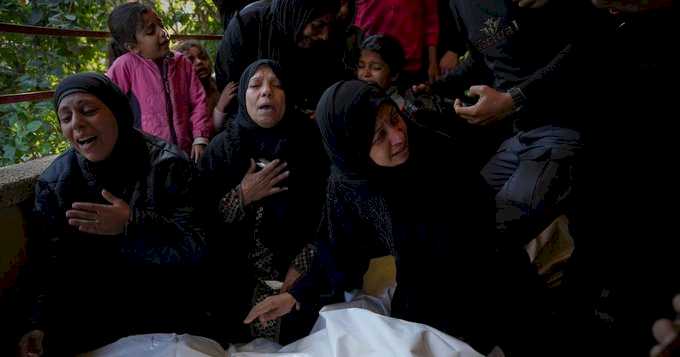
View 138 times
Burn and fire hazard’: More than 16,000 wireless earbuds recalled, A brand of wireless earbuds sold in Canada is being recalled due to burn and fire hazards.
An alert on Health Canada’s website advises anyone who owns a pair of True Wireless Earbuds to immediately stop using them and return the product to a Giant Tiger store for a refund.
The issue with the earbuds is a result of the USB charging cords being manufactured with the wrong wiring material. As a result, the product may overheat when plugged into a charger, leading to a risk of burns or fires.
There have been three reports of incidents in Canada since Nov. 27, though no reports of injuries.
There were 16,278 units of the affected product sold in Canada, according to the company.
The UPC is 774223568363 and SKU is 1545426, information which can be found on the packaging. The product was sold between July 17 and Oct. 14, 2025.
Any products purchased before then are excluded from the recall, including those that show a label for lot number 11012025.

View 136 times
Damaged roads and debris slow relief operations after deadly floods in Asia.
ACEH TAMIANG, Indonesia — Emergency crews were racing against time on Friday after last week’s catastrophic floods and landslides struck parts of Asia, killing more than 1,500 people. Relief operations are underway, but the scale of need is overwhelming the capabilities of rescuers.
Authorities said 867 people were confirmed dead in Indonesia, 486 in Sri Lanka and 185 in Thailand, as well as three in Malaysia.
Many villages in Indonesia and Sri Lanka remained buried under mud and debris, with nearly 900 people still unaccounted for in both countries, while recovery was further along in Thailand and Malaysia.
As the waters recede, survivors find that the disaster has crippled their villages’ lifelines. Roads that once connected the cities and districts to the outside world are severed, leaving some areas accessible only by helicopter. Transmission towers collapsed under the weight of landslides, plunging communities into darkness and causing internet outages.
In Aceh Tamiang, the hardest-hit area in Aceh province, infrastructure is in ruins. Entire villages in the lush hills district lie submerged beneath a thick blanket of mud. More than 260,000 residents fled homes once on green farmland.
With wells contaminated and pipes shattered, the floodwaters have turned necessities into luxuries. Food is scarce, and the stench of decay hangs heavily in the air.
Helicopters began deploying to drop food, medicine, and blankets into Aceh Tamiang’s isolated pockets, where clean water, sanitation and shelter top the list of urgent priorities. For many, survival hinges on the speed of aid.
Trucks carrying relief supplies crawl along roads connecting North Sumatra’s Medan city to Aceh Tamiang, which reopened almost a week after the disaster, but distribution is slowed by debris on the roads, said National Disaster Management Agency’s spokesperson Abdul Muhari.
Television reports showed widespread devastation in Aceh Tamiang after flash floods tore through the area, with cars overturned and homes badly damaged. Animal carcasses are scattered among the debris.
Two hospitals and 15 community health centers stood idle. Medical teams improvised in crowded shelters, battling shortages of medicine and staff as waterborne diseases loom.
On a battered bridge spanning the swollen Tamiang River, families cling to survival under makeshift tarpaulins. Children shiver in damp clothes. A survivor there, Vira, broke down in tears, “We have nothing left,” she cried.
“We drank floodwater from discarded bottles and scavenged for scraps ... whatever the current carried to us,” Vira, who goes by a single name, said in a television interview on Thursday.
Another resident, Angga, recounted how he and 13 relatives and neighbors clung to the tin roof of a shattered building for four nights.
“Even now, eight days after the floods erased our village, no aid has reached us — no helicopters, no rescue teams,” Angga said. “We had no choice but to drink the very water that destroyed our homes.”
___
Karmini reported from Jakarta. Krishan Francis in Colombo, Sri Lanka, contributed reporting.
Binsar Bakkara And Niniek Karmini, The Associated Press
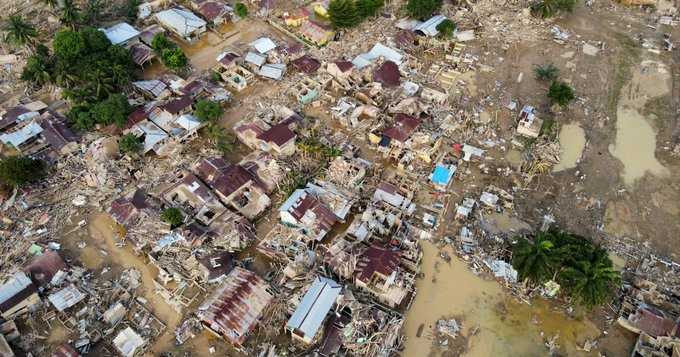
View 136 times

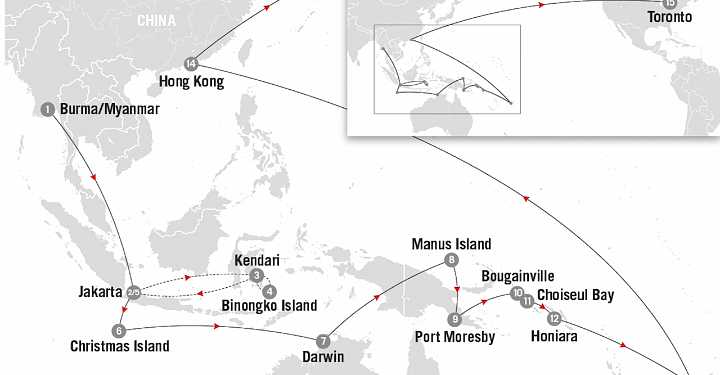




World News on Umojja.com